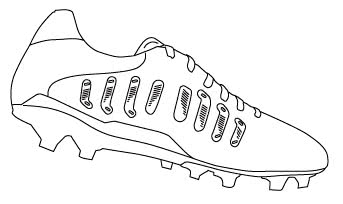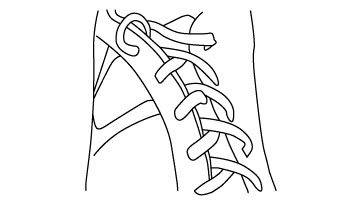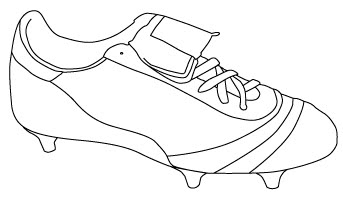Upper
Technologies
Adjustment Systems
A good fit is essential for running shoes. Good support prevents the foot from moving around inside the shoe, which can cause chafing, and improves efficiency and stability with every step.
Brands are incorporating more and more technologies into the upper to ensure a glove-like fit for all foot types.
- Heel reinforcements: The heel is a critical area for running stability. Many of the latest shoes incorporate internal or external heel counters to reinforce this area and ensure the foot is well supported, preventing it from slipping when landing or taking off.
- Dynamic lacing systems: Lacing systems are constantly evolving. Some models use asymmetrical systems or laces with internal straps, while others use cables (such as Nike's Flywire technology) that wrap around the foot to provide a customised fit. This is especially useful for runners with high or low insteps. This technology enables shoes to adapt to different foot shapes without compromising on comfort.
- Interior slip-resistant elements: Some high-end shoes feature small rubber or silicone inserts in the heel or tongue area to stop your foot from sliding around inside the shoe. This is particularly useful during long runs or when walking on uneven terrain.
Elements that improve running performance
Although there are no strike zones in running as there are in football, we find technologies in running shoes that directly influence a runner's efficiency and comfort.
-

Anatomical design and uncluttered areas: Many shoes either move the lacing system to one side or use integrated tabs (bootie fit) to eliminate pressure points on the instep. This improves the fit and prevents discomfort when running long distances.
-

Biomechanically reinforced zones: Some models feature strategic reinforcements in areas such as the metatarsals or midfoot to optimise lateral stability and guide the stride more efficiently. These zones also protect against impacts and twisting during running.
-

Key points feature elastic materials: Using materials with localised elasticity enables the shoe to adapt to the natural movement of the foot while maintaining support. This provides a dynamic fit that adapts to the pace or phase of the stride (support, transition or toe-off).
Log in or
create your account
Your best self starts here. Come in and get in your prime